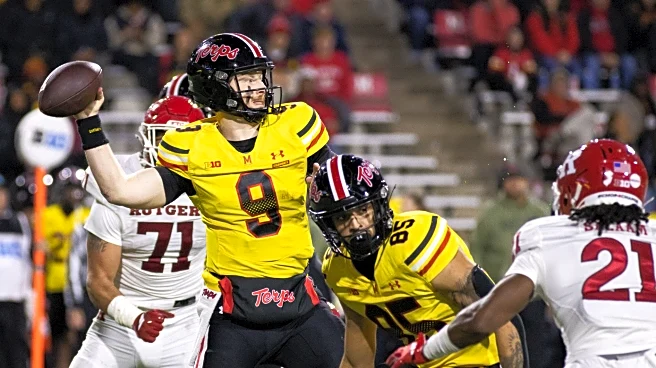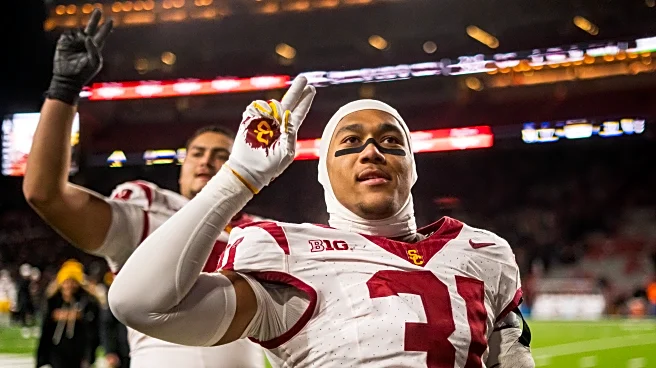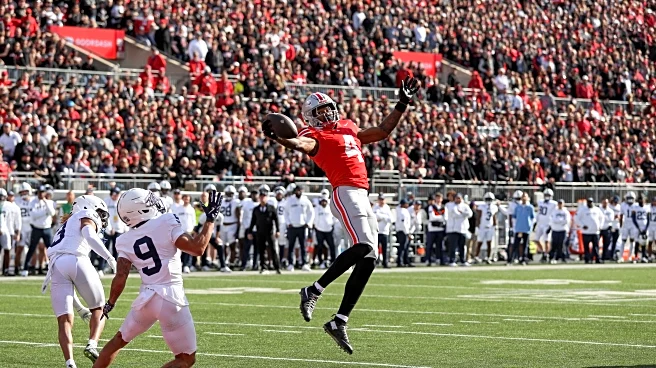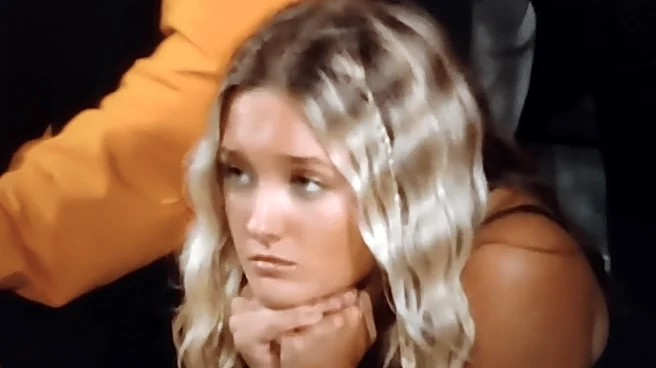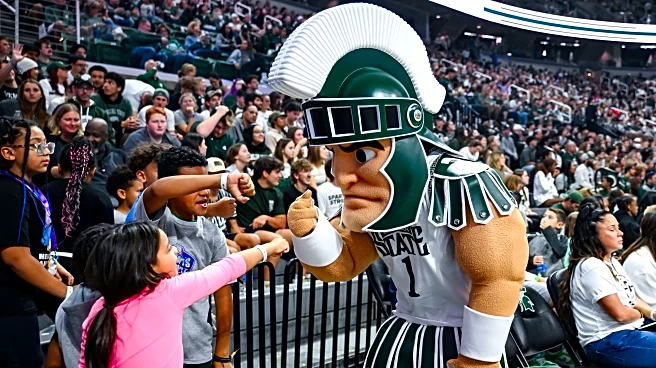Another week has brought about another loss for the Michigan State football Spartans. It is beyond unfortunate that this has become the norm in year two under Jonathan Smith, as MSU moves to 0-6 in the Big Ten for the first time since 2016. The 23-20 overtime loss to PJ Fleck’s Minnesota Golden Gophers delivered no shortage of drama, controversy, and storylines. Let’s get straight to the tape.
Welcome to the Show Alessio!
By about two hours prior to Saturday’s game, the word was out. Redshirt Freshman,
Alessio Milivojevic would be getting the start at the quarterback position over Junior and Captain Aidan Chiles. While many Spartan fans have been clamoring for this change (or any change) to be made, I was skeptical. Alessio’s first start to be in a game played on the road, coming off of a disheartening loss in a rivalry game seemed like a tough situation for the kid from Naperville, IL. Boy, was I wrong.
To Milivojevic, none of this mattered. From the jump, he showed composure and played inspired football, leading the offense to their season-high 467 yards. How was he able to do it? Like I mentioned in last week’s write up, Alessio seems to be the perfect fit for Brian Lindgren and Jonathan Smith’s “pro-style” offense. Let’s take a look at some of his best moments.
A week ago against the other school in the state, the MSU offense, whether it be with Milivojevic or Aidan Chiles, found success in the quick passing game. This allowed for State to get the ball in the hands of weapons on the outside and give opportunity for YAC, or yards after the catch. Below is an example of a simple “stick” concept that Michigan State hit against uofm just a week ago.

Velling will run the stick, taking three steps vertical, turning inwards, and sifting outside. Outside, Nick Marsh has an over route, filling in the space behind Velling in the event that the defense’s safety rolls down to double team the stick route. An easy read and an even easier completion to move the sticks (no pun intended).

Now, fast forward to this weekend. First quarter against Minnesota, Alessio and the Spartan offense are in a 3rd and 7 situation looking to convert and keep drive alive.

Velling is still set to the short side of the field, but this time attached to the line in a three-point stance. MSU faces a similar alignment from the Golden Gopher defense as a week ago, with a boundary corner within 3 yards of the outside receiver, a safety to the boundary, and inside LB all in the vicinity of Velling. The playcall comes in from Brian Lindgren, and the Spartan offense will be playing off of their tendency to throw the aforementioned stick route to their TE.

Rather than settle or sift outside after his three steps, Velling will fake the stick route, and head upfield in a double move, while outside WR Omari Kelly clears out his defender with a vertical route. Check it out in full speed below.

The first thing that makes this play work is the fact that it is a tendency-breaker. #49, Minnesota’s boundary inside linebacker, was likely told in preparation all week to watch for inside stick routes, especially to the tight end. So by selling the stick and going vertical, Velling creates a nice seam for Alessio to deliver the ball and convert the 3rd down. The other thing makes this play is the eyes of Alessio. Even though he likely knows he will be throwing to Velling the whole way, watch him first glance to his left side of the field. This subtle move influences #6 Minnesota’s field inside linebacker, plus both safeties (out of the picture), and opens up a huge hole in the middle of the field for Velling to work with. Had Velling been better covered by the Gopher secondary, this window in the middle of the field would have opened for Rod Bullard on his crossing route from the slot. A lot goes into each and every play, even seemingly easy completions and conversions like this one. Alessio’s maturity and patience shows here, along with his comfortability in the Brian Lindgren offense.
Another big part of the Spartan offense that has seen a downward trajectory in success over recent weeks has been the play-action passing game. While much of this is due to an ineffective rushing attack, we highlighted last week how the deep drop back plays off of play-action is not a strength of Aidan Chiles as a passer. After only one game in the Milivojevic era, I think it is safe to say that Alessio showed an ability to make a more positive impact on these types of plays.

Here, the image is frozen with wideout Evan Boyd in motion from the top of your screen to the bottom. This is a similar shift to what State runs when they want to add an additional blocker to run a wide zone concept, and is why the play-action is successful in getting the Minnesota second level to flow up to prevent the run.
Boyd will settle just outside of Omari Kelly, and run a deep vertical, that he eventually converts to an out-breaking route. Kelly has a middle vertical, but identifies a soft spot in the Gophers’ zone coverage, and sits his route down in space.

Once again, we see Alessio display perfect footwork, as he sells the fake and gets his head turned quickly to process and decide where to throw the ball. With MSU’s struggling offensive line, this ability to get the ball out quickly and accurately was a huge contributor to the Redshirt Freshman’s final statline of 311 passing yards.
For another great example of Alessio’s success with play-action shots, we move even deeper into the second half. With the score still knotted at 10 apiece, a Milivojevic scramble is good for six yards and a conversion on State’s opening third down of the drive. After taking a hit, you might think the Spartan offense would play it conservative and hand the ball off on the following first down. They do anything but, and dial up a deep “flood” concept off of play-action that is illustrated below.

The idea behind this route combination is in the name- as MSU sends three eligible receivers to one side of the field, “flooding” the boundary zones. After carrying out a quality play-action fake, it appears that Alessio is coached to read this flood from high-to-low, or from his deepest WR’s route to his shallowest. (Effectively Nick Marsh’s outside release vertical, to Jack Velling’s post-corner route, to Brandon Tullis in the flat.)
Once again, decisiveness and quick decision making are what turn this play into a major positive for the Spartans. Watch below as Alessio identifies a bust in the Golden Gopher secondary, identifies Marsh running free up the sideline, and gets the ball out on time.

Admittedly, this is not a perfect ball from Milivojevic. It is slightly underthrown, and Nick Marsh has to slow down to receive this ball and is not able to score. With that being said, how many times have we seen the rocket arm of Aidan Chiles completely overthrow open receivers on deep balls like these? A completion is always better than an incompletion, no matter how far the ball travels in the air.
This seems to sum up the main difference between the two signal callers to me. Chiles has the talent to make unbelievably high-level plays, yet has shown more hesitation and inconsistency than anything else this season. On the other hand, Alessio might not have as many tangible skills as Aidan, but to this point has shown a great understanding of the offense, and been able to process reads and execute much quicker than Chiles. This difference in play style is what has caused the difference in results between the two field generals. A change of some sort was needed this past Saturday, and despite the final score, the switch-up behind center undoubtedly gave the offense a spark and the improvement is evident in the box score. Now, how can this increase in yards and other positive statistics translate into actual wins? That is the task at hand for the Michigan State coaching staff this bye week. One place they need to start to devoting some more attention to is the Red Zone playcall.

Above is just two plays following Marsh’s catch of 48 yards that set MSU up deep in Gopher territory. From the three yard line, State lines up in an “Ace Left” formation, with a down tight end in Michael Masunas on the right, and slot receiver Rod Bullard just inside the hash on the left.
Minnesota counters with a five man front, with an overhang outside linebacker in a “9” technique just outside of Masunas. They also have their middle linebacker and strong safety both within striking distance of the box, definitely expecting a run play. The Gophers leave Bullard, Marsh, and Omari Kelly all in one-on-one matchups, yet Brian Lindgren decides to call a quarterback run with Alessio Milivojevic.

With the addition of Brandon Tullis to the run-blocking scheme, MSU technically does have even numbers, 7-on-7 in the box, not including Minnesota’s safety. Unfortunately, on this simple QB zone right, five of State’s seven blockers get beat. Aside from Center #51 Matt Gulbin and RT #58 Conner Moore, this is an embarrassing rep for the Spartan offensive line.

I place most of the blame on the playcall from Offensive Coordinator Brian Lindgren here. While most of us Spartan fans are not up in the booth with him, all of us could have told the OC that this play would be unsuccessful. Over the course of this 2025 season, we have seen a great deal of similarly designed quarterback runs. And of these plays, they have for the most part only been effective when QB Aidan Chiles has used his athleticism to make something out of the often small or non-existent holes his O-Line has opened for him. This is not a slight at Alessio, but he does not have the raw agility and quickness of Chiles to make this play work. I’m not even convinced that the great Kenneth Walker could have made this play work with the atrociousness with which this play is blocked up front.
To make matters worse, watch this play one more time. At the very top of your screen, notice Nick Marsh work a fantastic release on the Minnesota cornerback across from him, easily freeing himself up if the Spartans had called a goal-line fade to their best ball-catcher. Even if it isn’t a fade call, there are a variety of man-beater pass plays that could work well against to take advantage of the one-on-one coverage across the board, whether that is using the cushion that the Minnesota Free Safety opposite Bullard to work an out route, a quick slant, or any variety of options.
Michigan State ended up bringing out the field goal unit to miss a 24-yard attempt following this run play that goes nowhere. This sequence just about sums up the MSU red zone offense as of late.
Defense and Penalties
On the defensive side of the ball, MSU for the most part did their job. Joe Rossi’s unit held the Minnesota offensive attack to only 301 yards, the smallest total allowed since October 4th against Nebraska. Forcing 7 punts and only allowing 17 points in regulation is most definitely a win for the defense, but one statistic stands out: penalties. MSU committed 10 for 96, many of those yards coming at key moments late in the game. Let’s take a look at a pair.

Late in the fourth quarter, Minnesota is racing against the clock to get in the end zone and force overtime. On 2nd and 1 from the MSU 9-yard line, Rossi calls for a blitz from the field, bringing both outside and inside linebackers to the Gopher’s strong side. This leaves Aydan West (field corner), Malcolm Bell (boundary corner) and Malik Spencer (middle safety) all in man coverage with three vertical routes from the Minnesota offense. The blitz does its job in creating pressure, forcing an early throw. West and Bell also defend the outside verticals well. Malik Spencer is in good position, but does the one thing that could make this play a positive for Minnesota, flattening the Gopher Tight End well before the ball arrives.

There is laundry on the field immediately, and Spencer knows it right away. This penalty sets up the game-tying touchdown, which is frustrating in its’ own right, but it is elevated to infuriating knowing that this flag comes from an experienced veteran defensive back. These are the kinds of avoidable mistakes that negate the results of what was actually much-improved defensive play over the course of the game.
Now, to overtime. After a controversial “pass interference, wait, no, actually no penalty at all” sequence from the officials during the MSU offense’s turn, the Spartan defense almost immediately commits another PI of their own.

PJ Fleck’s offense has simple slot fade and hitch routes called to the short side of the field, and with MSU using six men down on the line of scrimmage, Gopher QB Drake Lindsay diagnoses man-to-man coverage and finds his best matchup to get the ball out quickly to, which is the fade from his boundary inside WR.

An absolute killer. Once again, the State defense has nearly every route blanketed, as Rossi drops both of his linebackers into coverage rather than sending the full 6-man pressure. CB Malcolm Bell, isolated versus the slot fade, forces the MN slot WR to take an inside release, giving QB Lindsay much less room to place this ball. He is in solid position in the back pocket of the receiver, until the ball arrives and he initiates contact a split second too early. Most definitely less of a clear call than the previous Pass Interference we broke down, but good for the same outcome for the Gophers- a fresh set of downs.
Takeaways and Looking Forward
Another winnable game down the drain, and the losing streak grows to six in a row. As this film review hopefully reminded you, this was a more than winnable game for Michigan State. A turnover on downs and two missed field goals canceled out a lot of the progress made on offense, while a considerable defeat in comparing penalty yardage plagued the defense. Despite these setbacks, State had chance after chance to win this game. We have seen, through the Xs and Os, a defense that has gradually shown growth, and now a new spark from quarterback Alessio Milivojevic on offense. Yet once again, the Spartans fall short. For what feels like the fifth week in a row, I ask the question: how much longer will this losing culture under Jonathan Smith be allowed to continue?
Let’s end on a high note for a change. I’ll leave you to go into the bye week with two pieces of good news, and two questions. First, it seems the Brian Lindgren offense has finally found a QB who fits the pro-style system. These next three games will serve as a great test for the OC; what can the offense do to make more strides and finally take the next step in terms of converting in the red zone? Secondly, there has been a direct correlation between Joe Rossi coaching from the sideline and improved defensive play. Execution is something the coaches harp on at nearly every press conference, and the young defense of Michigan State, as of recent, seems to much better understand their assignments and responsibilities. Can they cut down on penalties and create even one turnover to help out their offense? Only time will tell. Enjoy your bye week, and Go Green!


